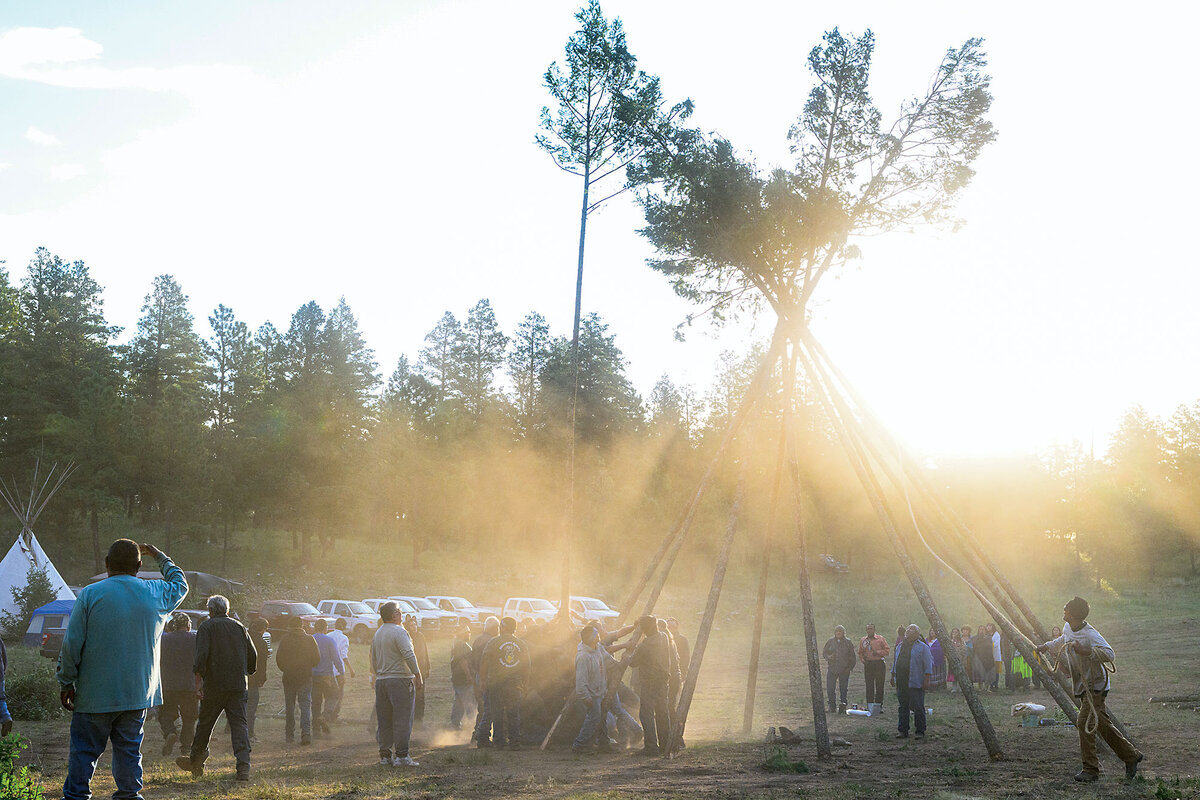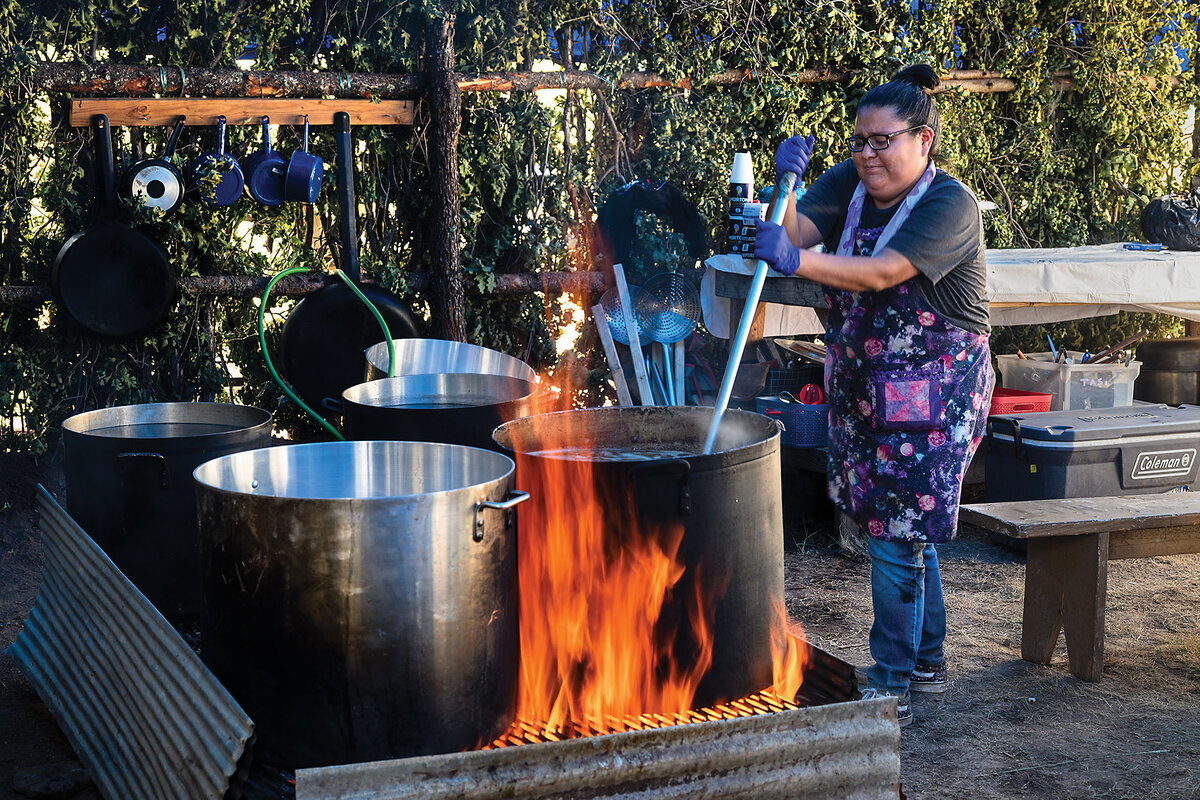This Apache rite of passage was once banned. Today, it helps empower girls.
Loading...
| Mescalero Apache Reservation, N.M.
Throughout her coming-of-age ceremony, 13-year-old Seaven Martinez wears a buckskin dress adorned with beads and little metal cones that jingle. Among the rituals she performs, the one most central is the dancing. Over three nights, she learns and practices her steps, for hours, inside what is called the “big tipi.” On the fourth night, she dances from dusk until dawn, to the rhythms of rattles and songs.
Mescalero Apache coming-of-age ceremonies are typically conducted from late spring through autumn and are only for girls. Banned from 1883 to 1978 by the federal government, which sought to coerce Native Americans into the Christian mainstream, the ceremonies were performed rarely, and in secret, for decades. Today, they are held openly for family and friends to celebrate the young women of their tribe.
Why We Wrote This
For almost a century, the federal government barred Apaches from conducting their traditional coming-of-age ceremonies for girls. They are performed openly today.
At its heart, the ceremony teaches girls to draw on the inner strength they never knew they had and gives them the knowledge that, “when they feel weak, they can pick themselves up and push through it,” says tribal member Courtney Naiche.
Expand this story to see the full photo essay.
Under a moonlit sky, a chorus of singing and drumming rises from the forested hills of the Mescalero Apache Reservation. Masked and body-painted crown dancers circle around a raging bonfire. Representing the mountain gods, they offer blessings and protection to Seaven Martinez, a 13-year-old who herself is dancing inside the tipi behind them. For four days and nights, she performs traditional rites of passage that will usher her into womanhood.
Mescalero Apache coming-of-age ceremonies are typically conducted from late spring through autumn and are only for girls. Banned from 1883 to 1978 by the federal government, which sought to coerce Native Americans into the Christian mainstream, the ceremonies were performed rarely, and in secret, for decades. Today, they are held openly for family and friends to celebrate and support the young women of their tribe.
Throughout the ceremony, Seaven wears a buckskin dress adorned with beads and little metal cones that jingle. Among the rituals she performs, the one most central is the dancing. Over three nights, she learns and practices her steps, for hours, inside what is called the “big tipi.” On the fourth night, she dances from dusk until dawn, to the rhythms of rattles and songs.
“We sing about everything,” chanter Byron Blake says. “The cattle hide she dances on, the tipi poles, the rattles, the mountains, the sky, and all of the animals – on land, under the ground, in the air.”
At its heart, the ceremony teaches girls to draw on the inner strength they never knew they had and gives them the knowledge that, “when they feel weak, they can pick themselves up and push through it,” says tribal member Courtney Naiche. Ms. Naiche was hired to help cook for the ceremony’s feast.
Women who have gone through the ceremony themselves look back and say that it changed them. As one elder, Donalyn Torres, reflects, “It’s brought me this far; it taught me how to live.”











